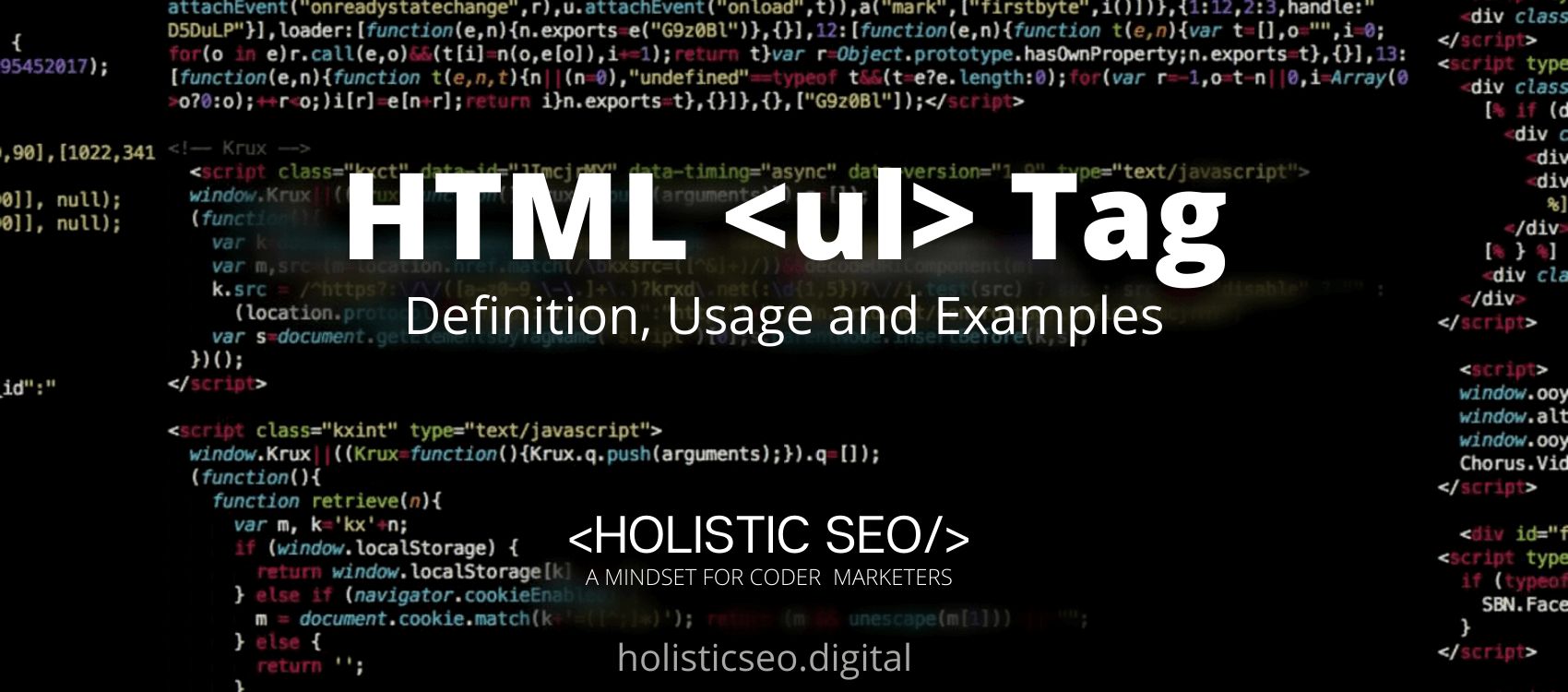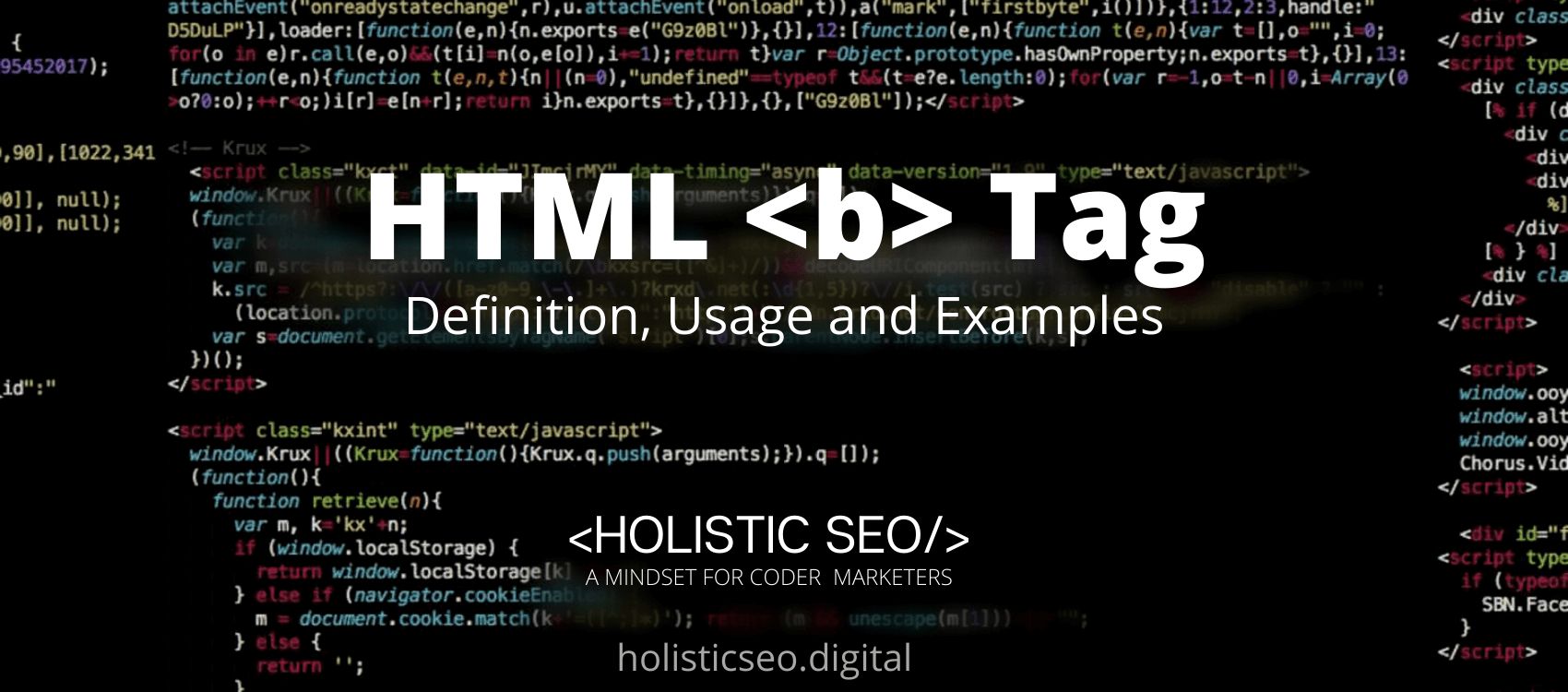The <abbr> HTML Tag denotes an abbreviation or acronym; the optional title attribute can be used to provide a definition or expansion for the abbreviation. If a title is provided, it must contain only this complete description. The <abbr> HTML Tag is used to specify an element’s abbreviation or short form. The <abbr> HTML Tag is part of the Formatting HTML category in HTML Element Reference. The attributes of the <abbr> HTML Tag are global and event attributes.
<abbr> code block example to learn how it works is given below.
<abbr>sample</abbr>
<abbr title="sample">S</abbr>The second example usage of the “<abbr>” code block example is below.
<abbr>HSD</abbr>
<abbr title="Holistic SEO Digital">HSD</abbr>What is <abbr> HTML Tag?
The <abbr> HTML Tag indicates an abbreviation or acronym. It is necessary for web developers because the <abbr> HTML Tag can be used to provide a definition or extension for the abbreviation.
How to Use <abbr> HTML Tag?
To use <abbr> HTML Tag, the developer should write <abbr></abbr> with an abbreviation or short form inserted between the start and end tags. These tags are used to shorten and group together a succession of letters. They can be found in both HTML and text files. Browsers, translation systems, and search engines can benefit from the abbreviation.
Example Usage of <abbr> HTML Tag?
The following example of usage of <abbr> HTML Tag is given below.
<abbr>SEO</abbr>
<abbr title="Search Engine Optimization">SEO</abbr>What are the Attributes of <abbr> HTML Tag?
There are multiple attributes for the <abbr> HTML Tag. The following attributes are listed below.
- Global Attributes: The <abbr> HTML Tag supports global attributes. All HTML elements, even those not specified in the standard, can have global attributes. This means that any non-standard elements must nevertheless allow certain characteristics, even if using such elements makes the content non-HTML5 compliant.
- Event Attributes: The <abbr> HTML Tag supports event attributes. The Event Attributes always have a name that begins with “on” and is followed by the name of the event for which it is intended. They specify a script to run when an event of the defined type is dispatched to the element with the specified attributes.
- Title Attribute: The <abbr> HTML Tag supports title attribute. Using the title attribute with the <abbr> HTML Tag has a specific semantic meaning; the abbreviation’s entire human-readable description or expansion must be included.
What are the Default CSS Settings for <abbr> HTML Tag?
The following are the Default CSS Settings for the <abbr> HTML Tag.
p {
font-size: 2rem;
}
abbr {
font-style: bold;
font-weight: 80;
}What are the Related other HTML Tags to <abbr>?
The other related HTML Tags to <abbr> HTML Tag are listed below.
- <b> HTML Tag: The <b> HTML Tag is related to <abbr> HTML Tag because they are both in formatting HTML Tags. The <b> HTML Tag is used to indicate that the text is bold.
- <address> HTML Tag: The <address> HTML Tag is related to <abbr> HTML Tag because they are both in formatting HTML Tags. The <address> HTML Tag is used to specify the author of a website or document’s contact information.
- <bdi> HTML Tag: The <bdi> HTML Tag is related to <abbr> HTML Tag because they are both in formatting HTML Tags. The <bdi> HTML Tag is used to create text that is written in a different direction than the rest of the text.
- <center> HTML Tag: The <center> HTML Tag is related to <abbr> HTML Tag because they are both in formatting HTML Tags. To centralize the text in HTML, the <center> HTML Tag is used.
- 48 Online Shopping and Consumer Behavior Statistics, Facts and Trends - August 22, 2023
- B2B Marketing Statistics - August 22, 2023
- 38 Podcast Statistics, Facts, and Trends - August 22, 2023


